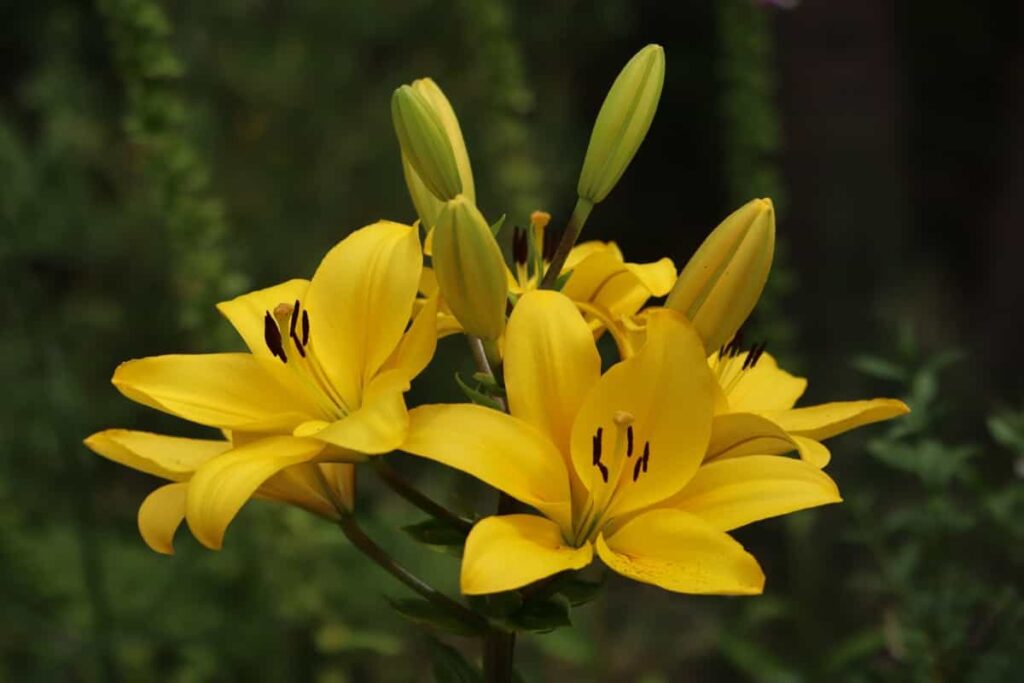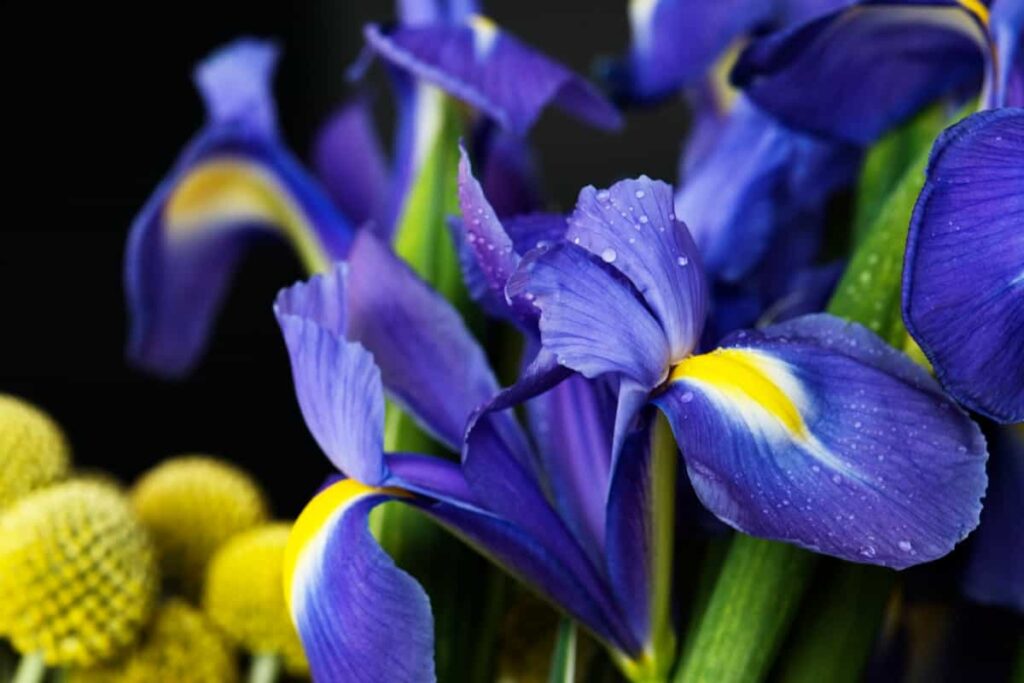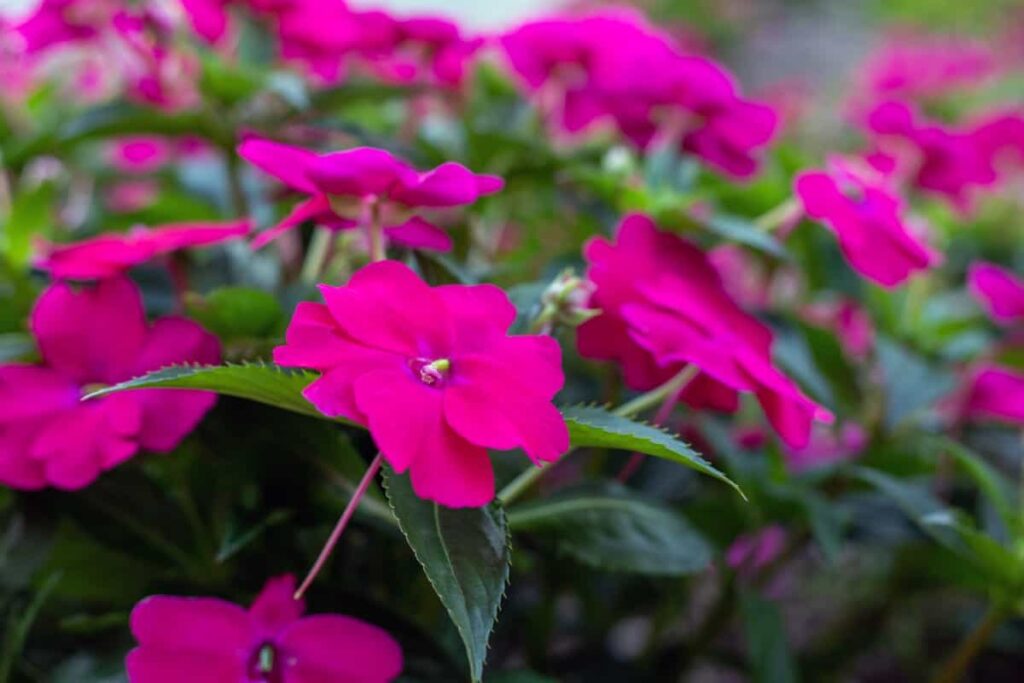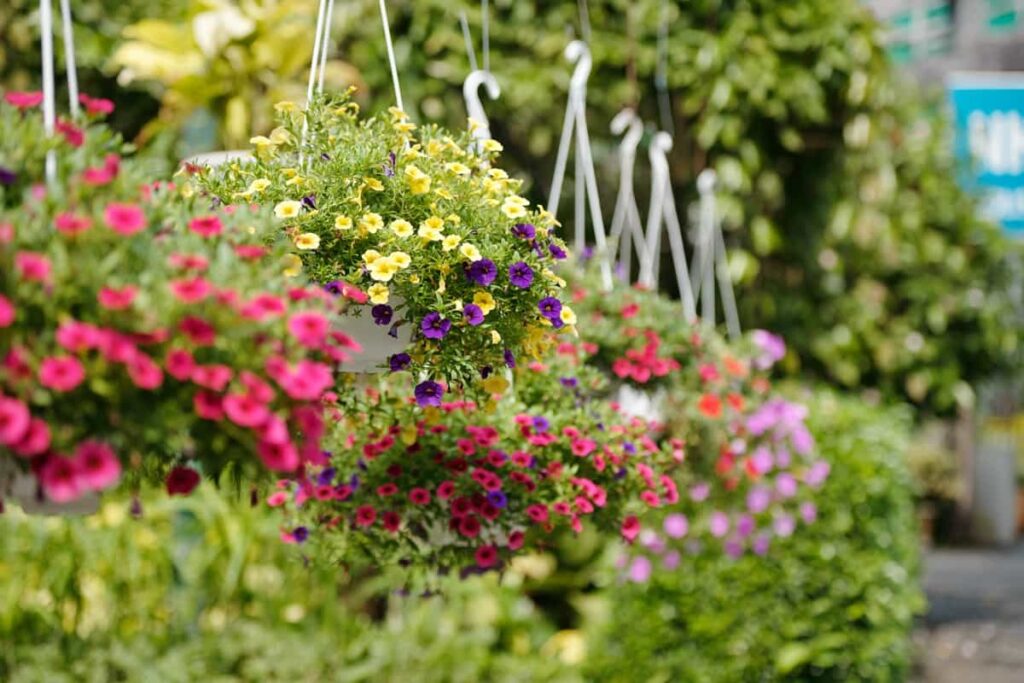When it comes to allergies, many are wary of the great outdoors, especially during peak blooming seasons. What flowers are most hypoallergenic? Are there any hypoallergenic flowers at all? For those grappling with such questions, you’re lucky: various hypoallergenic plants and flowers can adorn your garden or home. If you’ve been searching for the best outdoor plants for allergy sufferers and hypoallergenic flowers indoors or indoors, this guide will be your go-to reference.
Before diving into our list, it’s worth mentioning what to send someone allergic to flowers, the worst flowers for allergies, and indoor plants that cause allergies, as these insights can also aid in making informed decisions. While roses aren’t fully hypoallergenic, they are less likely to cause allergies than non-hypoallergenic flowers. Explore your garden’s 20 best hypoallergenic flowers, from Azaleas to Orchids, Columbines, Begonias, and Lilies.
20 Best Hypoallergenic Flowers
Azalea Flowers
Azaleas offer brilliant colors that can brighten up any garden, and the good news is that they are also one of the hypoallergenic flowers you can count on. They don’t produce much pollen, making them ideal for those who suffer from allergies.
Given their relatively minimal care requirements and striking appearance, Azaleas are not just hypoallergenic but also a convenient choice for seasoned and beginner gardeners. Because of their beauty and hypoallergenic properties, they are often the top recommendation on lists suggesting what to send someone allergic to flowers. However, it’s worth noting that all parts of the Azalea are poisonous, so they should be kept out of reach of pets and children.
Begonia Flowers
Another fantastic choice for an allergy-friendly garden is Begonias. These vibrant blooms can be grown outdoors and indoors, making them versatile for hypoallergenic or indoor plants. Their pollen is sticky, making it less likely to be airborne and trigger allergies.

Compared to the worst flowers for allergies, like chrysanthemums and sunflowers, Begonias offers a breath of fresh air, quite literally, for allergy sufferers. Furthermore, they’re quite low-maintenance, needing just a bit of sunlight and water. This feature makes them one of the best outdoor plants for allergy sufferers who may not have much time to devote to garden care.
Orchid Flowers
Besides their unparalleled beauty, Orchids make for excellent hypoallergenic flowers. They release minimal pollen and are mostly pollinated by insects, significantly minimizing the chances of airborne pollen. Because of this feature, they often figure out lists recommending what to send someone allergic to flowers.
Orchids are well-suited for indoor settings, making them an excellent choice for those searching for hypoallergenic flowers and indoor plants. However, these blooms require more care and attention than other hypoallergenic flowers, especially regarding watering and lighting conditions.
Columbine Flowers
These flowers are particularly enticing for allergy sufferers because they are largely pollinated by birds and insects, not the wind. This drastically reduces the chances of pollen getting airborne and triggering allergies. They are often included in lists featuring the best outdoor plants for allergy sufferers due to their low pollen count and unique appearance. While not commonly found in recommendations for indoor hypoallergenic flowers or hypoallergenic plants, they are a hardy species that can add aesthetic value and allergy relief to your outdoor garden.
Lily Flowers
Lilies are a go-to choice for those looking for stunning blooms, and they also happen to be less allergy-inducing compared to many non-hypoallergenic flowers. However, it’s worth noting that not all Lilies are hypoallergenic. Oriental Lilies, for instance, can be heavily scented and might trigger allergies in sensitive individuals.
In case you missed it: Growing Calla Lily in Your Garden: A Guide to Propagation, Planting, and Care

But other varieties, like the Asiatic Lily, have little to no scent and produce less pollen, making them a safer bet. Their breathtaking beauty and lower pollen count make them a popular choice for those pondering what to send someone allergic to flowers. However, if you have indoor pets, keeping them away from Lilies is best, as they can be toxic to cats.
Daffodil Flowers
Daffodils are not just a symbol of the advent of spring but also a relatively safe bet for those dealing with allergies. Their pollen is not easily airborne, as it tends to be heavier and stickier, thus posing less of a threat to those who suffer from allergies. Daffodils are typically pollinated by insects, a good alternative to the worst flowers for allergies, such as daisies or sunflowers.
Their bright yellow or white petals can make any garden look beautiful and happy, so they’re a top pick for people with allergies who want nice plants outside. While Daffodils might not come up in talks about allergy-friendly indoor plants, they’re great for outdoor areas because they’re not very likely to cause allergies and are easy to take care of with simple watering and occasional fertilizing.
Iris Flowers
With their unique shape and spectrum of colors, Irises can be a wonderful inclusion in a hypoallergenic garden. The good news for allergy sufferers is that these flowers are predominantly pollinated by insects, reducing the chances of their pollen becoming airborne and causing allergies. Irises is a relatively safe choice, unlike some non hypoallergenic flowers notorious for causing sneezes and sniffles.
In case you missed it: 20 Best Plant Nurseries in Manila: Wholesale Garden Centers for Flowers, Fruits, Indoor, and Outdoor Plants

They can be considered among the best outdoor plants for allergy sufferers because they not only add a splash of color but also come with the benefit of being less likely to provoke allergic reactions. Though they might not be your go-to option for hypoallergenic flowers or hypoallergenic plants indoors due to their size and sunlight requirements, they certainly make for a beautiful and safe outdoor planting choice.
Geranium Flowers
Geraniums offer vibrant colors and are remarkably hypoallergenic, making them a great addition to any garden or even as potted indoor plants. The pollen from Geraniums is typically too heavy to be airborne, making it less likely to trigger allergies. When it comes to hypoallergenic flowers and hypoallergenic plants indoors, Geraniums are often top contenders due to their low pollen levels and ability to thrive in pots.
Their easy care regimen, often requiring minimal watering and sunlight, also places them among the best outdoor plants for allergy sufferers. While they might not be the first choice for those contemplating what to send someone allergic to flowers, their low allergy risk and beautiful petals make them an option worth considering.
Impatiens Flowers
Known for their vibrant hues and shade-loving nature, Impatiens are another excellent choice for allergy sufferers. These flowers produce minimal pollen, making them far less likely to irritate allergies when compared to the worst flowers for allergies, like ragweed or goldenrod. Impatiens are often recommended as hypoallergenic flowers indoors because they prefer indirect light.
In case you missed it: How to Encourage Female Flowers in Gourds: Increasing Tips and Techniques

Still, they can also be grown outdoors in shaded areas, making them versatile among the best outdoor plants for allergy sufferers. Due to their low allergenicity and vivid color palette, they often feature on lists suggesting what to send someone allergic to flowers. Their easy care, which usually involves regular watering and partial to full shade, adds to their allure for those who have allergies but still wish to enjoy a vibrant, colorful garden.
Hydrangea Flowers
Hydrangeas, with their large, globe-like blooms, are eye-catching and relatively hypoallergenic. These flowers are particularly low in pollen, making them a safer choice for those with allergies. While their pollen is not completely non-existent, it is less likely to become airborne, reducing the risk of triggering allergic reactions. They can easily be considered one of the best outdoor plants for allergy sufferers due to their minimal pollen and capacity to thrive in various climatic conditions.
Though not commonly cited in discussions about hypoallergenic flowers or hypoallergenic plants indoors, they are often featured in outdoor hypoallergenic gardens. Their watering and sunlight requirements are moderate, so they can be a relatively low-maintenance option for those who want beauty without sneezing.
Petunia Flowers
Petunias are a colorful and popular choice for many gardens, and for those on the hunt for hypoallergenic plants, they offer a fairly safe bet. These flowers are largely insect-pollinated, meaning their pollen is not readily airborne, thus posing a lower risk for allergy sufferers. Petunias can be a refreshing contrast to the worst flowers for allergies, like daisies, and they often rank among the best outdoor plants for allergy sufferers.
In case you missed it: How to Germinate Seeds: Techniques for Faster Germination of Vegetables, Flowers, Fruits, and Herbs

Their vibrant shades and low maintenance make them ideal for new and experienced gardeners. While they are more commonly associated with outdoor gardens, their moderate care needs, including regular watering and full to partial sunlight, make them a contender for those seeking hypoallergenic and hypoallergenic plants indoors.
Rose Flowers
Roses, one of the most iconic and beloved flowers, are often queried for their hypoallergenic properties. Are roses hypoallergenic? While not entirely hypoallergenic, they are less likely to cause allergies than many other flowers. Their pollen is typically too large to become airborne, reducing the risk of inhalation and allergic reactions. They are often a top choice when considering what to send someone allergic to flowers.
Roses require more care, including regular pruning and attention to soil quality, but their captivating beauty often makes the extra effort worthwhile. They may not always be cited in discussions around hypoallergenic flowers or hypoallergenic plants indoors, but for outdoor settings, they stand as one of the more allergy-friendly options.
Snapdragon Flowers
With their unique, dragon-shaped blooms, Snapdragons add a touch of whimsy and color to any garden. These flowers are generally hypoallergenic because they produce minimal pollen, which also tends to be sticky and not easily airborne. Snapdragons offers a visually pleasing and sneeze-free solution for those seeking an alternative to the worst flowers for allergies.
Their hardy nature and moderate care requirements make them ideal candidates for those looking for the best outdoor plants for allergy sufferers. Though not typically recognized for use as hypoallergenic flowers or hypoallergenic plants indoors, their low allergenicity and enchanting form make them a fabulous choice for outdoor gardens.
Sunflower Flowers
Sunflowers, with their towering stems and bright yellow blooms, are a favorite for many but might not be the best option for those with allergies. While not truly hypoallergenic, some varieties of sunflowers have been developed to produce less pollen, making them somewhat less irritating for allergy sufferers.
Compared to the worst flowers for allergies, like ragweed, they are still safer, but caution should be exercised. Sunflowers require much sunlight and can grow quite tall, making them less ideal for indoor scenarios when discussing hypoallergenic flowers indoors or indoors. They can be considered for outdoor settings, but they may not rank as high as other options on the list of best outdoor plants for allergy sufferers.
Tulip Flowers
Tulips, synonymous with spring and vibrant colors, are generally a good choice for those with allergies. While not completely hypoallergenic, their pollen is not as readily airborne as other flowers considered the worst for allergies. These bulbous beauties are often recommended when pondering what to send someone allergic to flowers due to their relatively low allergenicity.
In case you missed it: How to Grow and Care for Snapdragon Flowers: A Step-By-Step Comprehensive Guide

They require well-drained soil and good sunlight, but their care regimen is otherwise straightforward. While they are most commonly seen in outdoor gardens and are often cited among the best outdoor plants for allergy sufferers, they can also be grown indoors, making them a versatile choice for those interested in hypoallergenic flowers indoors and hypoallergenic plants.
Verbena Flowers
Verbena flowers are colorful and versatile, adding a splash of brightness to gardens. Generally low in pollen, they pose a lesser risk for those who suffer from allergies, making them a more favorable option when considering the best outdoor plants for allergy sufferers. Their care is fairly simple, often requiring regular watering and full sunlight, but they’re not commonly cited for indoor hypoallergenic gardens.
Viola Flowers
Violas are small, charming flowers in various colors, offering visual appeal and low pollen counts. They’re a safer choice for allergy sufferers than many non-hypoallergenic flowers and are relatively easy to care for, needing partial to full sun and moderate watering. While not a top pick for hypoallergenic flowers indoors, they’re a good option for outdoor gardens.
Zinnia Flowers
Zinnias are vibrant and come in various colors, but they can pose a risk for allergy sufferers as they produce pollen that can become airborne. While they’re not the worst flowers for allergies, they’re also not the best choice for those with sensitivities. They need lots of sunlight and soil that drains well, so they’re better for outside.
Pansy Flowers
Pansies are known for their bright, face-like blooms and can be a good choice for hypoallergenic options. They produce less pollen and are generally insect-pollinated, reducing the risk of airborne allergens. They require partial to full sun and regular watering; they’re suitable for indoor and outdoor settings but shine as a hypoallergenic outdoor plant.
Aster Flowers
Asters, while beautiful and diverse in color, can be problematic for those with allergies as they produce more airborne pollen. Despite their visual allure, they might not be the best choice for people with allergies. These flowers love lots of sunlight and need soil that drains well. So, it’s best to plant them outside, away from people who might be bothered by them.
Conclusion
Picking the right flowers for your garden can help people with allergies. Opt for hypoallergenic options like Roses, Petunias, or Pansies to enjoy the beauty of nature without the sneezes and sniffles.
- Crops Grown in Summer Season: Best Choices for Summer Gardening
- Organic Pest Control for Tomato Farming
- How to Maximize Sheep Farming Profit
- Broccoli Varieties: Choosing the Right Cultivars for Your Farm
- How to Raise Pigs in Your Own Backyard: A Comprehensive Guide
- Budget Friendly Sheep Shed Ideas: Cheap and Low-Cost Tips
- How Much Do Cattle Farmers Make: Revenue Streams in Cattle Farming
- Management Pests and Diseases in Your Cotton Field
- Sheep Farming Business Plan for Beginners
- Aquaponic Farming at Home: A Step-By-Step Guide
- Profitable Village Farming Business Ideas in 2024
- High-Yield Aquaculture: Fast-Growing Fish for Farming
- Effective Fish Pond Construction Techniques for Beginners
- Irrigation and Water Management in Pineapple Farming
- Blossom to Harvest: Mastering Flowering and Pollination in Papaya Farming
- Pig Fattening Essentials: From Selection to Sale for Beginners
- Raising Wagyu Cattle: A Complete Guide for Premium Beef Production
- Soil Types and Their Water Holding Capacity
- Optimizing Irrigation Schedules for Coconut Groves for Enhanced Yield
- Espresso Your Garden: Coffee Grounds for Healthier Acid-Loving Plants
- The Best Soil Mix for Snake Plants: How to Mix Your Own Snake Plant Soil
- Green Thumb Success: Expert Tips for Cultivating Greenhouse Beans All Year Round
- Bloom All Year Round: The Ultimate Guide to Indoor Hyacinth Care
- Eco-Friendly Gardening: How to Make Liquid Fertilizer from Kitchen Waste
- Ultimate Guide to Grow Anise in Pots: Explore Seed Propagation to Harvesting
- Guide to Raising Chester White Pigs: Discover Breed Facts to Growth Management
- Mastering the Elegance: The Ultimate Guide to Weeping Cherry Tree Care, Planting, and Maintenance
- Ultimate Guide to Planting Garlic in Grow Bags: Growing Strategies for Beginners
- How to Fix Spider Plant Leaf-Related Problems: Natural and Organic Remedies
- 10 Reasons Why Your Tulsi Plant is Shedding Leaves: Home Remedies and Solutions
- Optimizing Growth and Yield: The Advantages of Palm Bunch Ash Fertilizer
- Utilizing Neem Oil Extract as a Natural Pesticide for Hydrangea
- From Soil to Harvest: Various Ways in Which Farmers Can Use AI Tools
- Steps to Encourage and Induce Citrus Flowers: A Comprehensive Guide
- How to Fix Snake Plant Leaf-Related Issues: Natural and Organic Remedies
- Transform Your Garden into a Fragrant Oasis with Raat Ki Rani (Night Blooming Jasmine)
